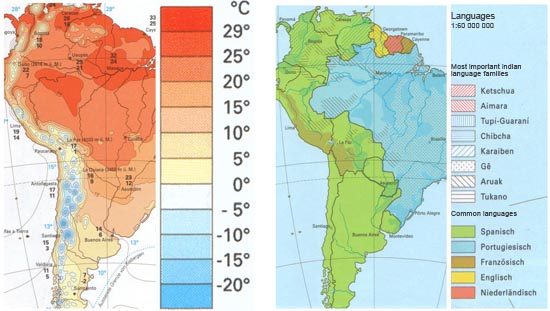Statements of thematic maps
Thematic maps give explanations on type and attribute, location, extent
and distribution of a phenomenon. They can depict completely qualitative as
well as quantitative information in the shape of diagrams or mosaic depictions.
In addition, it is possible to visualise frequencies, durations, motions,
directions or relations on the map.
On a thematic level
several differentiations can be employed. On the one hand, single-layered and
multi-layered maps are distinguished and on the other hand thematic maps can
be divided into analytical, complex and synthetic maps. These map types are
described below.
Single-layered and multi-layered maps
Single-layered and multi-layered maps
Single-layered maps or cartograms only depict
neighbouring elements based on location- or area-based signatures. No superposition
of signature layers exists. Therefore, single-layered maps are constrained to
one statement layer. This has the advantage of a better readability and
comprehensibility.
When different signature layers as
well as quantitative and qualitative statements are superimposed one speaks of
a multi-layered map. This kind of maps can
contain a high density of information. Rises the amount of data generally the
maps complexity rises as well, which requires more attention from the
cartographer and the map reader.
The example below shows a single-layered map on the left and a multi-layered map on the right.
 (Spiess 2004)
(Spiess 2004)
Analytical, complex und synthetic maps
Analytical, complex und synthetic maps
Maps can also be classified in a thematical and content related way.
Depending on the amount and kind of information it can be differentiated between
analytic, complex (or complex-analytic) and synthetic maps. The following
interaction introduces the mentioned types.